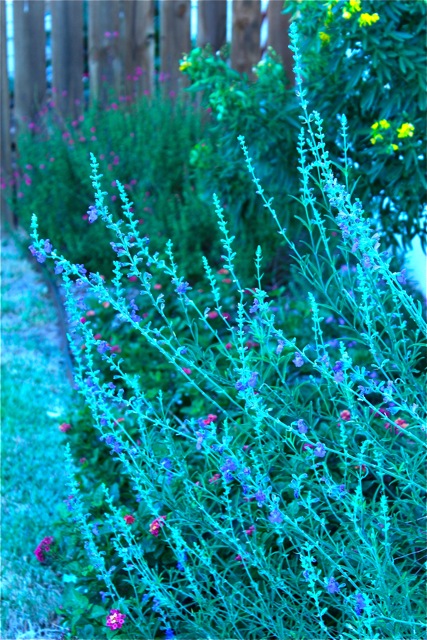Hanging onto hot color in the late summer garden
Even though we are well past Labor Day, summer hangs on like a blanket over Central Texas. Days go by faster, but the heat hadn’t begun to wane until today.
After months without rain, my plants enjoyed an inch of the wet stuff this week – enough to rejuvenate the garden as we head into fall.
The Pride of Barbados seems to mimic the sun with its hot orange blossoms reaching for the sky.
Jutting out like this, it seems alien-like.
Bursting with color, plants in the front garden look like they are in a race to see who can grow the fastest, bloom the longest and be the brightest. Hot time in the city…
Sometimes I am frustrated with the thryallis — it’s definitely a late summer bloomer and occasionally sleeps in after winter. I think we’re spoiled with our vast array of three season plants. I’m spoiled – a season and a half just doesn’t seem long enough!
Like its cousin, the red Turk’s cap, this Pam’s pink variety never disappoints in my garden. In part shade with some morning sun, its delicate hats tip to me in the breeze.
More than 30 different species of Duranta grow in tropical climates. Mine have been perennials most years, coming back in summer to bloom through the fall. Only in very frigid winters have I lost them — two failed to come back after the winter of 3 days at 17 degrees. I have the purple sapphire showers, the alba white and this lavender growing in my garden.
The candlestick tree (cassia alata) towering over other plants in the garden is just now starting to bloom.
The back shade garden brings some hot tropical colors to the party as well. I have to replant Persian shield every spring, but I couldn’t garden without its color and texture.
While the Moy grande hibiscus is done with its plate-sized flowers, Lord Baltimore is still blooming strong beside the pool.
I know this is the result of my not pruning enough in the spring, but I am thrilled with the weeping form that my crape Myrtle has taken on in front of the cutting garden.
Only allowed on the vegetable garden fence, this cypress vine always perks me up when the veggie garden becomes a towering and crispy mess before the fall garden clean up.























